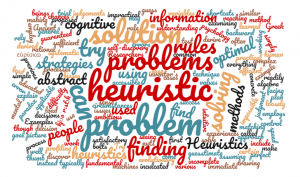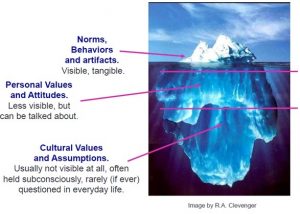ATA 5

Assignment five allowed me to further explore the differences in Japanese and American cultures; specifically, the effects that culture has on emotional regulation. Ma et al. (2018) explore how cultural beliefs influence individual interpretation of situational context, and how it effects emotional regulation of positive emotions through a four study process. Ma et al. (2018) hoped to provide evidence through their studies that Americans increase positive emotions when they perceive a task to be high in efficacy while Asian cultures choose to decrease those same positive emotions in similar situations. The study was successful in providing evidence for their hypothesis. The findings although indicative of the hypothesis did show that culture is influential upon emotional regulation, but is not the only influence.
Throughout the studies Ma et al. (2018) did find similarities between the Japanese and American participants; including, the experience of higher levels of positive emotions when tasks were expected to be useful in successfully completing a task. The major difference between the two groups was the tendency for Americans to place a higher level of efficacy when choosing whether to savor positive emotions they associate with a particular task. Ma et al. (2018) consider this difference due to the tendency of Asian cultures to have negative associations with happiness, and positive emotion.
This assignment left me with an increased knowledge of the term heuristics previously covered in a different course. Heuristics are shortcuts created by the brain in order to achieve more efficient function and reduce reaction time to familiar situations. Along with this knowledge I also take with me a clearer understanding of terminology presented by Matsumoto & Juang (2017); including, appraisal, emotion antecedents, and cultural display rules. This assignment is personally relevant to me through life experience; when interacting with individuals from other cultural backgrounds it can be easy to get lost, and not fully understand why a person is reacting to a situation differently than myself. This understanding of cultural differences in expectation of emotional response and regulation has great potential in preventing misinterpretation of other’s emotional reactions.
Sources:
Ma, X., Tamir, M., & Miyamoto, Y. (2018). A socio-cultural instrumental approach to emotionregulation: Culture and the regulation of positive emotions. Emotion, 18(1), 138–152.
Matsumoto, D. R., Juang, L. (2017). Culture and psychology (Sixth). Cengage Learning. https://ebooks.cenreader.com/#!/reader/b3e59046-b88b-4b61-b7b6-f21d6b270baf/page/ 70079d0b-34ea-47ad-8b6a-3e25ae646eae.
The included image pictures the word heuristics at the center of so many others. This to me shows the significance that heuristics hold in a general sense and not only in reference to emotional regulation. Heuristics are the foundation of how we interpret the world and how we choose to act in accordance with that interpretation.
ATA 3
Assignment 3 was based on the reading of a blog written by Claire Hershey (2019). She was a student from Temple University majoring in the study of recreational therapy studying abroad in Belgrade, Serbia. She was immersed in Serbian culture and observed many differences between American and Serbian cultures. Types of food and ways of going about everyday life are obvious differences, but the main difference that stood out with the significance was the treatment of handicapped individuals. She found Serbian culture to be non-inclusive, intolerant, and hostile toward handicapped individuals when they were in public interacting with others. Overall, Hershey (2019) considered the experience as a whole to be beneficial to her from both personal and career aspects.
After the completion of this assignment I have learned a better understanding of terminology from the textbook (Matsumoto & Juang, 2017). Self-concept and enhancement, national character and identity being the most prominent. It helped me to grasp the differences in these terms and also to understand how they play off of and influence one another. Hershey’s (2019) experience reminded me of the topic of intercultural sensitivity, previously covered in this course and the article written by Milton Bennett titled A Developmental Model of Intercultural Sensitivity (2011). I found line of thought drifting back to the Bennett’s (2011) six stages of intercultural sensitivity and where Hershey (2019) would fall as per his descriptions of each stage.
From reading Hershey’s (2019) blog and completing this assignment I can say that I find it personally relevant when trying to understand why a culture has certain practices and beliefs, submersion and an unbiased consideration will be the best way to comprehend cultural practices different than what I am used to. Allowing personal beliefs and values to distort my interpretation of another culture limits my ability to fully understand it. Removing my own beliefs and considering the culture based on an objective consideration of the culture as a whole instead of breaking it down into parts allows for a clearer perception. I chose the following image to represent my takeaway from assignment 3 because it shows how diverse cultures can be, but it is that diversity that makes them unique pointing out the need for an open and objective point of view when truly attempting to understand a different than your own.

Sources:
Hershey, C. (2019, June 20). Temple university education abroad and overseas campuses. [Web log post]. Retrieved from https://studyabroad.temple.edu/profiles/temple-summer-in-serbia/claire-hershey
Matsumoto, D. R., Juang, L. (2017). Culture and psychology (Sixth). Cengage Learning. https://ebooks.cenreader.com/#!/reader/b3e59046-b88b-4b61-b7b6-f21d6b270baf/page/ 70079d0b-34ea-47ad-8b6a-3e25ae646eae.
Bennett, M.J. (2011). A Developmental Model of Intercultural Sensitivity. The Intercultural Development Research Institute. www.idrinstitute.org
ATA 2
Kohls (1984) work titled The Values Americans Live By led me down a path of personal insight. Reflecting on my own personal experiences in my adult and childhood life, acknowledging the prevalence of American cultural values in my life was interesting. The influence that cultures has in decision making is something that occurs automatically. This reminds me of a term I learned in a previous class; heuristics, which are shortcuts made by the brain. These heuristics are shortcuts, automatic responses to certain things or situations due to past experiences. The brain memorizes successful responses to situations and in the future when similar situations arise the brain automatically respond. Culture is embedded in our brains and is reflected in the decisions the we make, many of which are made heuristically.

This assignment is personally relevant to me due to the fact that I find personal reflection essential for growth. Often times throughout my educational experience I have found it easy to focus on subjects such as culture as something to learn about from other individuals. That is not always the case, self-reflection can be a great educational tool to using one’s own personal experiences in life to learn and realize the influences of culture on their own life decisions. Culture influences how we decide to react to situations in our lives that arise greatly impacting our individual outcomes, as I have learned through the completion of this assignment.
Source:
Kohls, L. R. (1984). The values Americans live by. Washington, DC: Meridian House International.
ATA 1
Although there is a distinguishable difference between individuals regarding their level of acceptance of other cultures I had never considered that someone would have taken the time to define different levels of acceptance and create a model describing the behavioral tendencies of those who fall under each stage. Bennett’s (2011) model of intercultural sensitivity is very elaborate. Reviewing the different stages he describes in his model, I was able to relate various times in my life to different stages of the model creating an understanding of how I personally have progressed in how I view other cultures. Coming from an environment in my childhood where some individuals held views of other cultures that did not align with my own, I could not make sense of why we were all so different in our attitudes and beliefs toward cultures other than our own. Bennett’s model was eye opening and allowed me the understanding that although I am at a level of acceptance of other cultures, there is room to expand my thinking and how I interact with people from different cultures.
This topic of intercultural sensitivity was useful knowledge to have when researching material for my health psychology class recently. The cultures of different social classes were reflected in how they deal with different chronic illnesses and their treatments. Some cultures are more open to psychological treatments meant to help people cope with the stresses associated with their illnesses while others are not. Where I am from it is uncommon for people to be comfortable sharing their personal problems with others, especially not a stranger (therapist). The culture in that particular area of North Carolina shows an unacceptance of outsider help with personal problems.
As with most areas of life education is ongoing; having no real end. My own experiences with different cultures is varied; traveling to different countries, the island state of Hawaii, living in different states both on the east and west coast of the United States, and experiencing the culture of military life. Even with this exposure I feel the world of culture is so vast that there will always be more to experience and learn about. I hope throughout my cultural journey in life that I do not rank different cultures, but consider them individually and respectfully appreciating their differences and why those differences exist.
Source:
Bennett, M.J. (2011). A Developmental Model of Intercultural Sensitivity. The Intercultural Development Research Institute. www.idrinstitute.org

I chose this image to be representative of cultures on a larger scale. It is a tendency of many to focus on culture with a limited perspective of time pertaining to the present. Past cultures cannot be forgotten in our consideration of intercultural sensitivity. Cultures from the past have something to offer in the way of being examples of successful interaction beneficial to current and future cultures.